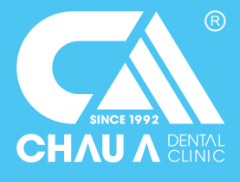Replacing All Teeth in Upper or Lower Jaw

If you are missing, or need to remove all teeth in one or both jaws, implants may allow you to have a fixed full-arch bridge fabricated as well.
 As an alternative to wearing a full denture (if there is adequate bone or bone augmentation procedures can be performed to grow sufficient bone) multiple implants can be placed across the jawbone to provide support for a fixed bridge. This procedure is similar to those described for single or multiple implants but requires careful diagnosis, planning and coordination before treatment begins. This attention to detail will ensure that an appropriate number of implants can safely be placed in positions that will allow your dentist to fabricate a bridge which will meet your needs and expectations.
As an alternative to wearing a full denture (if there is adequate bone or bone augmentation procedures can be performed to grow sufficient bone) multiple implants can be placed across the jawbone to provide support for a fixed bridge. This procedure is similar to those described for single or multiple implants but requires careful diagnosis, planning and coordination before treatment begins. This attention to detail will ensure that an appropriate number of implants can safely be placed in positions that will allow your dentist to fabricate a bridge which will meet your needs and expectations.
The number of implants necessary for a full-arch fixed bridgevaries depending on your particular anatomy, the opposing teeth, the type of bridge you want to have placed and the number of teeth you want or need to replace with the prosthesis. A full arch of implants can be placed when you are already missing all teeth in one of your jaws. If you have teeth remaining, they may need to be removed as a first step before implant surgery can proceed, or sometimes the teeth may be extracted and implants placed immediately after the teeth have been removed. If there are teeth remaining, you may be able to have a temporary fixed-bridge made by your dentist to help transition from your own teeth to implants. In this scenario (while the implants are healing), the temporary bridge stays in place which allows chewing, speaking and smiling – all without having to wear a removable denture. If it is not possible to retain enough teeth to support a fixed bridge while the implants are healing, then you may need to wear a removable denture temporarily.
Usually, you will be advised by your dentist to refrain from wearing the denture for a period of time (customarily two weeks) after the implants have been placed. This allows the gums to heal without being disturbed. In recent years, we have learned that it is often possible to place a full arch of implants and connect them to a fixed bridge (usually temporary) in what is known as immediate loading – which means the implants are receiving “load” from chewing forces as soon as they are placed.
This newer procedure is highly successful but there are certain requirements for its success. This technique requires
careful planning and coordination by your dentist and surgeon and as with all treatment, you should discuss all of your options and alternatives with your dentist and decide together which may be the best and most appropriate for you.
What is an implant overdenture?
An implant overdenture fits over a dental implant with various types of attachments that provide you with excellent stability and retention of your complete dentures. The implant overdenture is a full denture used to replace the teeth in a full-arch where all the teeth are missing. In essence, it is a larger version of the implant assisted removable partial denture (IRPD). The denture can “snap” into place to afford you more comfort, and improved chewing ability. Implant overdentures are held in place by various dental attachments selected by your restorative doctor to provide maximum retention, and increased chewing ability. The implant overdenture is removable to facilitate cleaning of the implant supporting structure. Implant overdentures can be made to look extremely natural and feel comfortable.
Pre-surgical prosthodontic planning for implant overdenturesbegins with diagnostic impressions for recording jaw relation and diagnosing possible dentures. These impressions help to determine the correct positioning of the teeth on the new dentures as well as to confirm the optimal location for each implant. They are also used to assure correct appearance and bite. Frequently, a template is produced from the diagnostic impression that is provided to the surgeon for guidance during implant placement surgery.
Most often, an upper overdenture will require placement of more implants than a lower overdenture due to the different nature of the anatomy of the upper and lower jaws. It may also be possible to fabricate an upper denture without a palate (roof of the mouth), which may be a more comfortable option for some patients.
The specific need for an implant overdenture can vary and the decision for this treatment option should be made with your restorative dentist. Many patients can benefit from the facial support provided by the extensions of the complete denture design. The number and type of implants should be decided upon following a detailed discussion between you and your dentist(s), a thorough examination, and careful consideration of your personal experiences with your current dentures.




